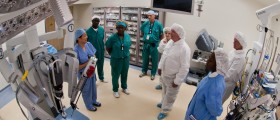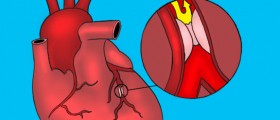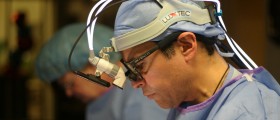
Varicocele is a medical condition that features with an abnormal enlargement of the veins in the scrotum. The testicles are supplied with the blood via the testicular blood vessels. They start in the abdomen and go through the inguinal canal finally reaching the testicles. The blood from the testicles is eliminated by the veins. These blood vessels contain small one-way valves which prevent back-flow of the blood. If the valves are defective and do not function properly this eventually results in formation of a varicocele.
In some people treatment for varicocele is not necessary. However, if the condition causes pain, testicular atrophy or even infertility a varicocele must be surgically removed. There are several surgical procedures and the goal of each of them is to seal off the affected vein and redirect the blood flow into the normal veins of the scrotum.
Varicocelectomy
Varicocelectomy is a conventional open surgery in which a surgeon makes incision below the groin area or in the abdomen. The incision lines are 2 to 3 inches long. The surgeon then ties off the affected vein. This is an outpatient procedure performed under spinal or general anesthesia. Strenuous activities of any kind are forbidden for several weeks after the surgery. Complications of varicocelectomy are infection, hydrocele and in 20% of patients the varicocele reoccurs.
Microsurgery for Varicocele
Microsurgical ligation is a surgical procedure in which the surgeon makes small incision and cuts only the skin and fatty tissue. Since the muscles stay intact postoperative pain is less intensive and the recovery time is shorter comparing to conventional open surgery. The affected vein is identified through an operating microscope. While the larger varicoceles are cut and stapled the smaller ones are only cut and stitched. The surgery does not last more than an hour and a half. Microsurgical ligation is highly successful with only few complications.
Laparoscopy for Varicocele
This surgical procedure includes making a small incision line in the abdomen. A tiny instrument is inserted through the incision and it repairs the varicocele. Laparoscopic varicocelectomy is performed under general anesthesia. It carries more risks than advantages and therefore it is not performed very often.
Percutaneous Embolization of Varicocele
This is a minor non-surgical procedure. During the procedure a steel coil or silicone balloon catheter is inserted into a specific vein in the leg below the groin. A coil or catheter is then passed to the testicular vein with the assistance of an X-ray. Once the enlarged veins are noticed the doctor releases coils or balloons which block the affected vein and interrupt the blood flow. Percutaneous embolization is not routinely performed since it carries a greater risk comparing to open surgery and offers little advantage.

















Your thoughts on this
Loading...